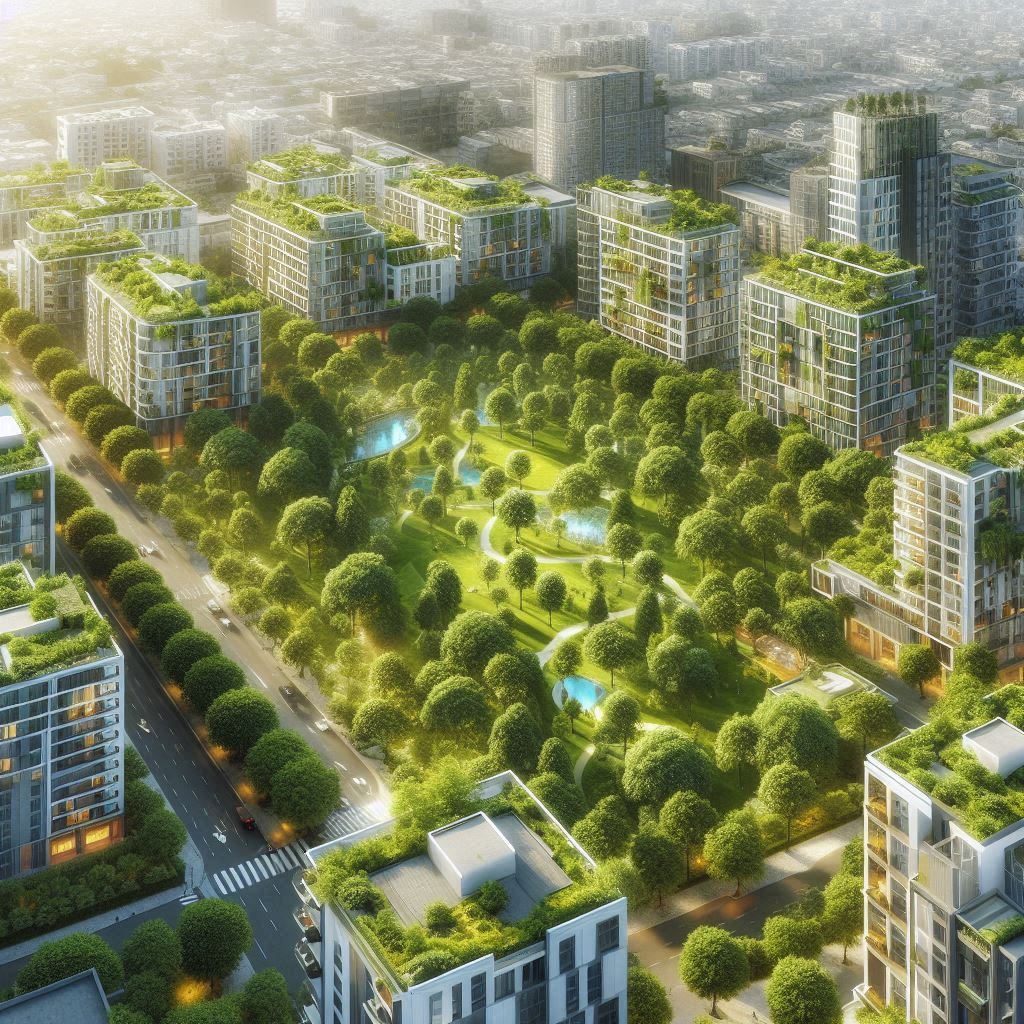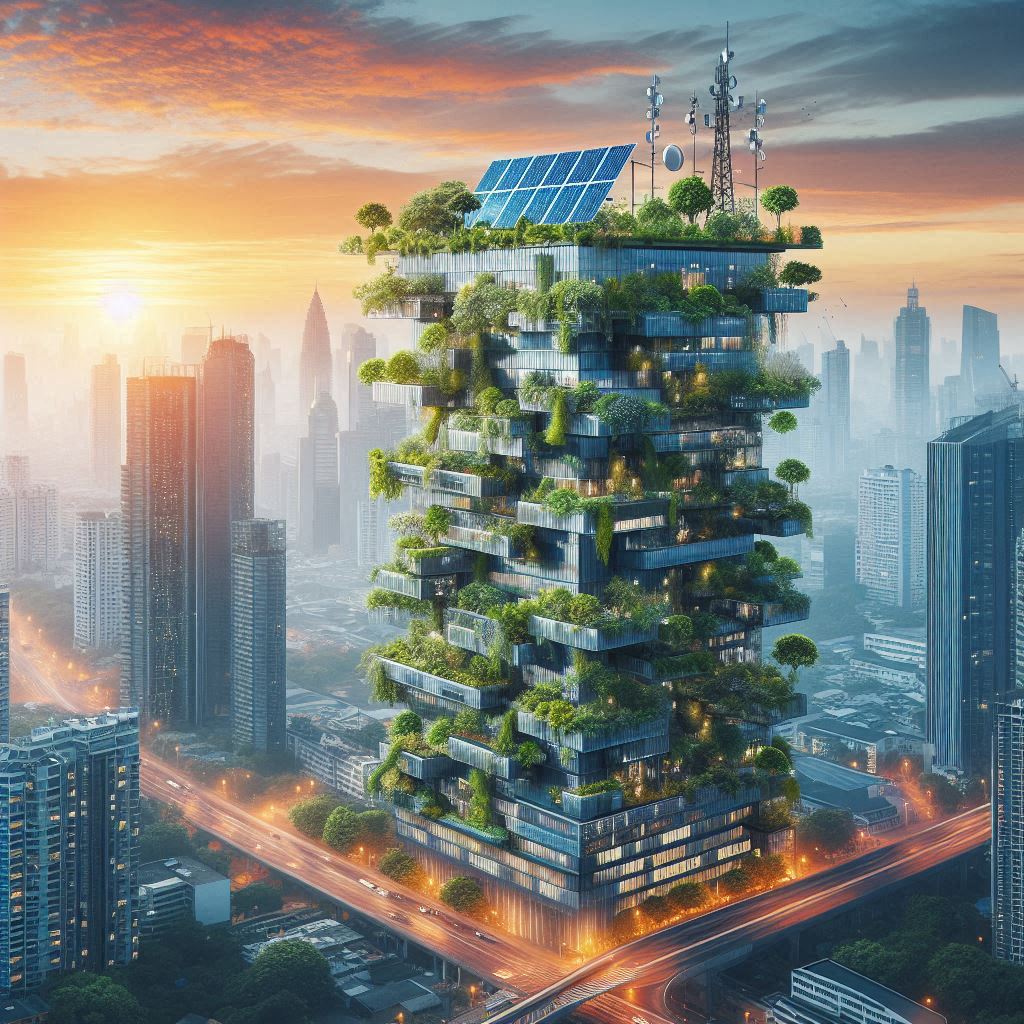I. Introduction
In the 21st century, the intersection of urban development and environmental stewardship has led to a profound evolution in construction practices. Central to this evolution is the concept of Green Building Policies, a paradigm that prioritizes sustainability in the construction and operation of buildings. The essence of green building is to minimize the ecological footprint of structures while enhancing their efficiency and longevity. The significance of this shift toward sustainable construction can be measured not just in environmental benefits but also in economic terms.
Local markets around the world are starting to feel the influence of green building as these policies become more widespread. By examining the economic impact of these practices, we can better understand the value they offer to communities and the potential future trajectory of urban development. This blog aims to explore both the direct and indirect economic effects that Green Building Policies have on the local economies where they’re implemented.
II. Understanding Green Building Policies

Green Building Policies encompass a set of regulations, guidelines, and incentives designed to encourage environmentally responsible construction. These policies are informed by a collection of Green Building Standards, such as the Leadership in Energy and Environmental Design (LEED) system, which assesses the sustainability of a building across various metrics such as water usage, energy efficiency, and material selection.
Internationally, there are diverse exemplars of such policies. In Europe, for instance, the Energy Performance of Buildings Directive (EPBD) requires all new buildings to be nearly zero-energy by the end of 2020. Meanwhile, in Singapore, the Building and Construction Authority’s Green Mark Scheme provides a comprehensive framework for assessing and improving the environmental impact of buildings.
The objectives of these policies are as varied as their geographies, but all aim to reduce the environmental impact of building construction and operation. They encourage the incorporation of green technology in construction, promote energy efficiency in buildings, and demand a broader adoption of renewable energy sources.
III. The Direct Economic Impacts of Green Building Policies
Adopting Green Building Policies can have a profound direct impact on the economy. While upfront costs for green technology in construction can be higher than traditional methods, these expenses are often recuperated through operational savings and increased asset values over the building’s lifecycle. Moreover, there is a burgeoning job market created by the demand for skilled labor in the sustainable construction sector.
In the United States, a study by the U.S. Green Building Council (USGBC) estimated that the green construction industry contributed over $134 billion in labor income to American workers in 2018. Furthermore, these policies can lead to substantial savings for businesses and homeowners alike. A report from the International Energy Agency (IEA) indicates that investing in energy efficiency can yield a double return on investment over the lifespan of the measures implemented.
Cities such as Atlanta have demonstrated the direct economic benefits of green building through their commitment to sustainable practices. Atlanta’s Better Buildings Challenge (BBC) is an example where the city leads in energy and water efficiency, bringing together local leaders to make their buildings more efficient and contribute to economic growth.
III. The Indirect Economic Impacts of Green Building Policies
The indirect economic benefits of Green Building Policies can be transformative. One of the most significant impacts is the potential increase in property values. A study published in the Journal of Portfolio Management found that buildings with sustainability certification command higher rents and sales prices than their non-green counterparts.
Energy-efficient buildings also contribute to decreased operating costs. The U.S. Department of Energy reports that commercial buildings can reduce their energy bills by approximately 30% by implementing energy efficiency measures. These savings are crucial for businesses looking to improve their bottom line.
The health benefits associated with green buildings also contribute to indirect economic gains. Improved air quality and access to natural light have been linked to enhanced employee productivity and reduced absenteeism in workplaces, as documented by the World Green Building Council.
Finally, the drive for green building regulations inevitably leads to innovation. Companies are incentivized to develop new materials and technologies, which can lead to the growth of entirely new industries. An example is the smart glass industry, which is projected to grow significantly as energy-efficient solutions for windows become more prevalent.
IV. Challenges in Implementing Green Building Policies

The transition to green building is not without its hurdles. One of the biggest challenges is the perceived expense associated with green technology in construction. Despite the long-term savings, the initial investment can act as a deterrent, particularly in markets that are cost-sensitive. Additionally, the enforcement of green building policies can be complex, with local governments often facing difficulties in monitoring compliance and performance.
The cost vs. benefit debate is an ongoing one, with some stakeholders arguing that the economic benefits do not justify the initial expenditure. However, strategies such as implementing phased approaches to policy enforcement, offering tax rebates, and providing education programs can help mitigate these concerns.
V. Conclusion
Green Building Policies represent a critical stride forward for local economies, promising a future where sustainability and profitability go hand in hand. The journey towards widespread adoption is paved with challenges, but the potential benefits to the environment and the economy are vast. The economic impacts—both direct and indirect—suggest that investing in sustainable construction and energy efficiency is not only good for the planet but also beneficial for the economic health of local markets.
As we look towards the future, Green Building Policies will play an increasingly important role in shaping our cities and communities. By adopting and rigorously implementing these policies, we can ensure that our local economies thrive in a manner that is both economically and environmentally sustainable.
VertPro.com serves as a resourceful platform for property owners and managers seeking to enhance their buildings’ energy efficiency. The site offers a range of services, including Commercial Energy Audits, Benchmark Compliance consultancy, and a Construction Marketplace. At the heart of VertPro® is a suite of SaaS technology-based solutions designed to assist in navigating the complexities of Energy Benchmarking and Energy Audits/RCx Plus, while ensuring adherence to over 60 Energy Benchmarking and Energy Efficiency Laws across the country.
For those looking to improve their property’s energy usage and operational value, VertPro.com provides a diverse array of tools and information. The site aims to facilitate a better understanding of energy efficiency practices and legislation, helping building owners and property managers make informed decisions about their energy strategies while complying with all energy ordinances and laws.

